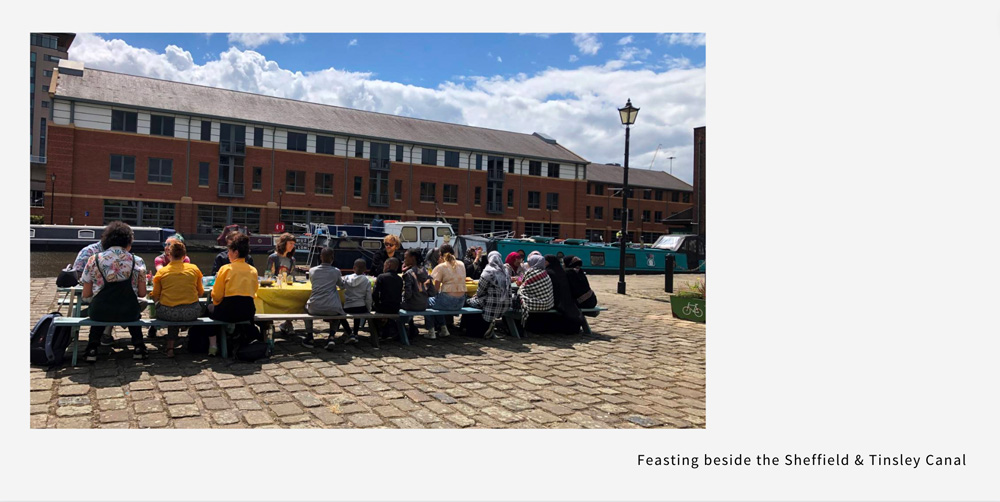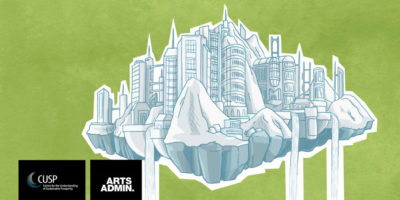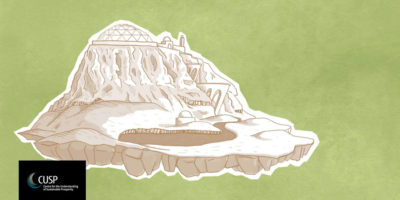Harvesting Real Utopias
To honour the season of harvest, of pickling, of ‘putting up’, CUSP researcher Malaika Cunningham is dedicating her eight blog in the series ‘Real Utopias’ to celebrate and signpost some of the activism and art that is happening in the UK around food justice. (This article also appeared on the Arts Admin website).
Blog by MALAIKA CUNNINGHAM
To re-cap for those who haven’t read any of the other blogs in this series, I am using this blog to seek out and celebrate ‘real utopias’, which use creativity, democratic processes, and/or alternative ownership models to challenge extractivist capitalism. This is the eighth blog in the series.
We are in the season of abundance. Fruit trees are laden. Blackberries are ripening. Even my local Morrisons is proudly announcing that their tomatoes were ‘Grown in Yorkshire’. Of course, this summer has also been a frightening one. The driest July since 1935, the hottest day recorded since records began. It is, thankfully, raining as I write this now in early August, but I have been worrying a lot about water this month, and how this impacts agriculture. So next month I will focus on water and the activism, academia, and art which can offer us opportunities for action and reasons for hope around that theme. However, right now, to honour this season of harvest, of pickling, of ‘putting up’, I want to celebrate and signpost some of activism and art which is happening in the UK around food justice.
In 2018 a consortium of English organisations including the Land Workers Alliance, Global Justice Now, Sustain, the Permaculture Association, and numerous locally focussed food and land groups came together to write A People’s Food Policy. This wide-ranging document explores concepts of food sovereignty, food justice, and a rights-based approach to the food system. It provides a foundation for lobbying for a more holistic, accountable, and people-driven food policy in England. They define food sovereignty as:
“The right of people to healthy and culturally appropriate food produced through ecologically sound and sustainable methods, and their right to define their own food and agriculture systems. It puts those who produce, process and consume healthy and local food at the heart of our agriculture and food systems, instead of the demands of market and transnational companies.”

A central argument of A People’s Food Policy is that we need meaningful and accessible democratic engagement to re-think our approach to food production and distribution in the UK. Profits have long been placed ahead of human needs, and government policy has focussed on efficacy and scale, rather than sustainability, resilience, or equity. This has led to drastic food insecurity across the UK, poor working conditions for land workers, and one of the highest levels of concentrated land ownership in the world.
My work focusses on the role of participatory arts practice in creating democratic spaces—spaces for people to come together to imagine (and maybe even embody) alternatives; to discuss ideas; and to disrupt and play with assumed norms. In this month’s blog I want to focus in on artworks which create these spaces with a focus on food. I must admit that this is also a bit of a selfish topic. I am currently curating a potluck series with Artsadmin, as well as developing a piece with The Bare Project (The People’s Palace of Possibility) which explores food justice. So, in some ways this blog is also a record of some of the research I’ve been doing for this work.
Last December we held a two-week residency in Doncaster at Artbomb focussed on food justice. We collected kitchen stories; had conversations with community workers, urban farmers and academics; we led foraging and cooking workshops; we worked with Food Aware to salvage food that would go to waste into meals for those facing food insecurity. Out of this work, we created a shop window installation and whittled our recordings into some tracks for a Palace Radio, which you can listen to here.
The work of artist Maya Chowdhry is significant in the realms of food justice. Inviting audiences to grow, cook, eat, and reflect on food have been part of her artworks for many years. For example, in her artwork Peas on Earth Maya used the humble pea—a crop which has been cultivated by humans for 11,000 years—as a symbol for our relationship with food. In this piece the audience were given seeds to plant; through headphones poetry and music blended with probing questions on our relationships with food; and augmented reality to invite the audience to investigate the politics of what we eat. This blend allowed the audience to get dirt under their fingernails and take home a plant they could see grow, as well as engage with the more global and ephemeral sphere offered by digital technology.
This constant oscillation between the very, very local, and the global is a constant theme within food justice. The daily labour of growing food—a deeply tangible, immediate, ancient kind of labour—can seem quite distant from the political and environmental politics of food. This division between the politics of farming and the daily practice of agriculture is something PhD candidate Emily Westwell is exploring in her research with CUSP (She is also heard in the Palace Radio tracks above).

I believe that arts practice has a unique role to play in bringing together these two spheres of reality: an immediate crisis of a sudden drought decimating a lettuce crop, and then the global impacts of environmental crisis. Maya Chowdhry’s piece What’s Eating Our Reality grew out of Peas on Earth. This piece was simultaneously a 3-course-meal and a live art piece in which the audience imagined eating their favourite foods for the last time. What ingredient would you miss the most if it ceased to exist because of climate change? There will be those things which become increasingly scarce over the coming years and decades and this piece brought that future into the present for the audience. Whilst dealing with big and frightening ideas, it also encouraged playfulness and laughter between the participants. Maya argues that it is through these exchanges, between strangers, in a space outside our everyday experience, that real engagement with food justice emerges. The piece itself offers a lot of material and provocation for discussion, through projection mapping, a carefully curated meal, and ‘sonic seasonings’ (which can change the flavour of food using only sound!).
These projects—activist (A People’s Food Policy), academic (Emily Westwell’s work), and artistic (Maya Chowdhry & The Bare Project)—offer us insights and ideas for how we can create a more just food system, and a space for us to discuss and shape these visions for ourselves. They are hopeful and allow us to challenge the system that has not worked for either planet or people for a long time. As we celebrate the abundance of summer—the first leaves of basil, the ripening tomatoes—I also want to celebrate this work. Perhaps it could herald different kind of change in season.
This series is created in partnership with Arts Admin.



